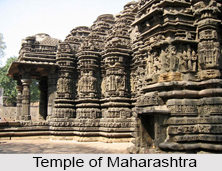 The monuments of Pune reflect both the grandeur of the Maratha rulers and the colonial architecture of the British. Lying at a distance of 119 miles from Mumbai and situated at a height of 1905 feet, it is from Pune that the great Maratha leader Chatrapati Shivaji was reared. At one point in time it was the capital of the Peshwa Raj in Maharashtra, but with the eclipse of Maratha power in 1817 the British developed the town into the summer headquarters of the Government of Mumbai and a major military cantonment. Seen among the monuments of Pune are both the palaces of the Marathas as well as the civic constructions of the British military cantonments.
The monuments of Pune reflect both the grandeur of the Maratha rulers and the colonial architecture of the British. Lying at a distance of 119 miles from Mumbai and situated at a height of 1905 feet, it is from Pune that the great Maratha leader Chatrapati Shivaji was reared. At one point in time it was the capital of the Peshwa Raj in Maharashtra, but with the eclipse of Maratha power in 1817 the British developed the town into the summer headquarters of the Government of Mumbai and a major military cantonment. Seen among the monuments of Pune are both the palaces of the Marathas as well as the civic constructions of the British military cantonments.
The earliest mention of the city was can be seen in the copperplates dating back to the 8th century, which show that the rulers of the Rashtrakuta dynasty were probably the first rulers of the place. It was later under the rule of the Yadavas of Devagiri and the Nizamshahi Sultans till it was overtaken by the rulers of the Mughal dynasty. In 1599 the districts were assigned to Malaji Bhonsla, the grandfather of Shivaji, by the kings of Ahmednagar. In 1750 it became the Maratha capital, and thirteen years later it was plundered by the Nizam. In October 1802, Yashwant Rao Holkar defeated the combined armies of the Peshwa and Scindia. As a result of this defeat the Peshwa invited British assistance and Pune was occupied by troops under Lord Wellesley in 1803. After the Battle of Kirkee in November 1817, Pune surrendered to the British.
Situated on the right bank of the Mutha River at its confluence with the Mula River, Pune is widely dispersed, embracing the outer suburbs of Kirkee (Khidki). To the south is the Hill of Parvati. To the east and south-east are rolling hills. An old aqueduct, built by the Rastias, a leading Maratha family, runs from a well near Khadakwasla to a reservoir at Sadashiv Peth.
The Pune city of today is an interesting potpourri of tradition and modernity. On the one hand there are the various ancient monuments of Pune for those looking to unravel the history of the place. On the other hand, after the arrival of Osho to the city, and the setting up of the Osho international Meditation Resort, it acquired an international feel. Thus there are visitors queuing up for the old and the new, with the monuments of Pune ranking prime among the chief attractions of the place.
A number of monuments found herein are attractions not just in Pune but among all the monuments Maharashtra.



















